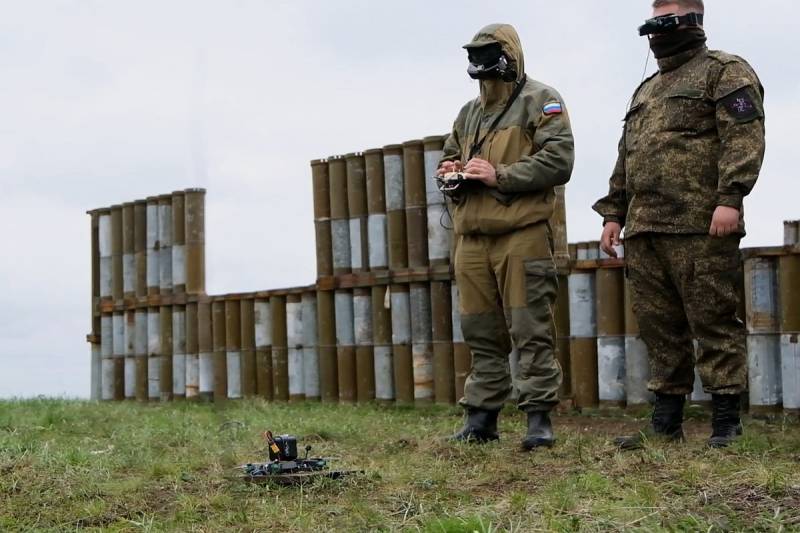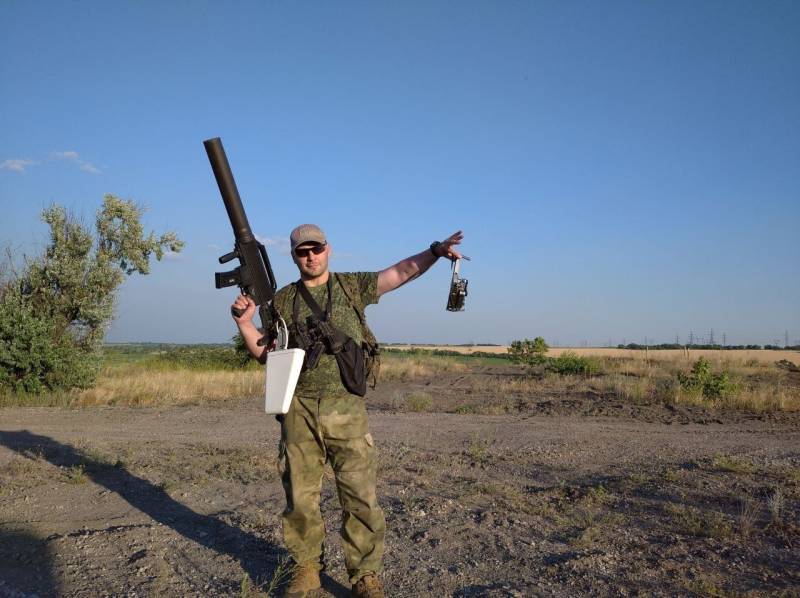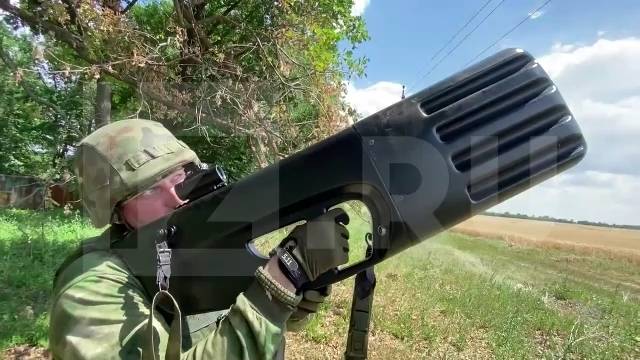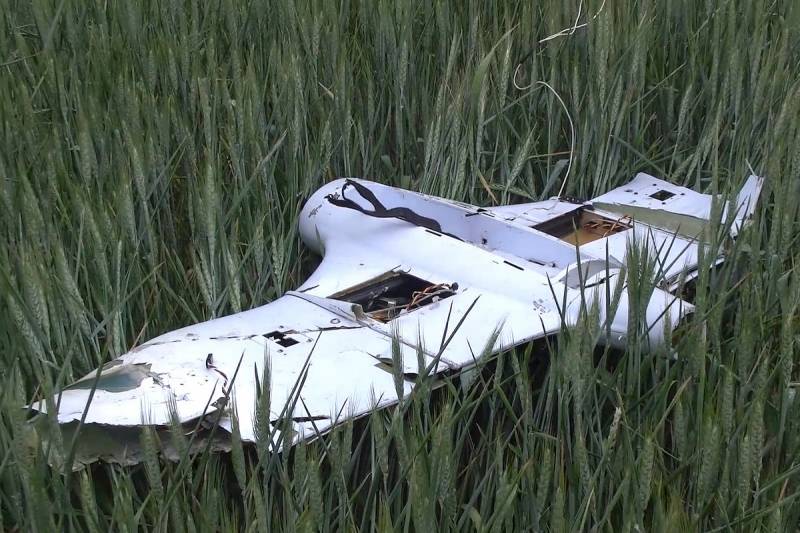Russian electronic warfare against Ukrainian UAVs

Training of UAV operators in the Russian army. Photo by the Ministry of Defense of the Russian Federation
A characteristic feature of the current hostilities in the Donbass and new regions is the widespread and active use of various unmanned aerial vehicles. Accordingly, various means and methods are required to counter such techniques. High efficiency in solving such problems is demonstrated by various electronic warfare systems, from full-sized self-propelled systems to portable devices.
Enemy Complaints
The Ukrainian formations are armed with an unmanned aviation equipment of different classes and many types, both specially designed military models and products from the commercial market. For a number of reasons, the most widespread and widespread are light multicopters of various models that carry a camera and are capable of lifting some combat load.
Such UAVs are used in solving several basic tasks. First of all, they are used for aerial reconnaissance at the tactical level. In addition, quadcopters in artisanal conditions are equipped with means of suspension and release of a light combat load. In recent months, products with shooting "from the first person" have become widespread - they are used as loitering ammunition.
In general, the existing "park" of unmanned aerial vehicles allows us to solve a wide range of tasks, both independently and in cooperation with other forces and means. However, the Russian army has long learned to counter enemy UAVs, and Ukrainian formations cannot use their potential. Meanwhile, the situation is constantly deteriorating.

EW complex "Krasukha-4" in position. Photo by the Ministry of Defense of the Russian Federation
A few weeks ago, foreign media reported on heavy losses of Ukrainian UAVs. Every month, Kyiv formations lose about 5-10 thousand devices of all types and classes. The main reason for such losses is the impact of Russian electronic warfare equipment. They suppress radio navigation signals and control channels, after which the UAV cannot perform tasks and / or remain in the air. Also some number drones strike with fire from the ground.
The situation on the fronts is changing, and the use of UAVs is becoming more and more difficult. A good example of this was given by the Guardian back in April, citing a Ukrainian drone operator. According to him, in December the device could fly 3 km from the position, and at the time of the interview, the range was limited to 500 m due to interference. Accordingly, the effectiveness of the use of UAVs in the interests of other means and systems fell.
Obviously, this situation will continue and develop, and in a negative way for the Ukrainian formations. The effectiveness of their UAVs will continue to fall, and losses will rise again. All this will have a negative impact on the use of other means and weapons, as well as on the results of combat work in general. However, the enemy and his foreign patrons will look for a way out of this situation. How successful is unknown.
Means of influence
According to reports, a wide range of electronic warfare equipment of various classes is used in the area of the Special Operation. In critical areas, full-size complexes of the Krasukha-4 product type are being deployed. The units are massively receiving "anti-drone guns" of a number of models, portable and used by one operator. Despite the difference in appearance, characteristics and capabilities, all such systems can solve common problems.

An operator with an LPD-801 "gun" and a downed UAV. Photo vk.com/novnews
Self-propelled and stationary electronic warfare systems are capable of independently detecting the presence of UAVs by their signals, incl. at considerable distances. Portable "guns" do not have such an opportunity - in their case, the operator must monitor the air situation. In both cases, when a target is detected, the complex produces directional interference. In addition, jamming stations have been developed for permanent operation, creating a kind of dome over a given area.
The suppression of UAVs of all classes as a whole comes down to a couple of basic tasks. First of all, the communication between the device and the operator is broken. The second task is to suppress satellite navigation signals. Without determining their location and without outside commands, commercial drones cannot continue flying and solve assigned tasks.
In the case of commercial devices, both tasks are not particularly difficult. Communication and navigation frequencies are well known, and jamming them is only a matter of technique. Military UAVs can use a secure radio channel. However, this does not solve the problem of losing navigation.
The UAV without navigation and communication with the operator freezes in place until the batteries run out or performs an emergency landing. As a result, he becomes an easy target even for small arms. weapons or taken as a trophy. In the latter case, reprogramming for use in your fleet is not excluded.

Portable electronic warfare system "Stupor". Photo "Izvestia"
The topic of means of combating UAVs has been studied and worked out over the past few years. The industry regularly introduced various designs of this kind, both specialized and with more advanced features. After the beginning of the Special Operation, the processes of creating and manufacturing such equipment accelerated. For example, the troops receive several models of "guns" from different manufacturers, and it is known that several more samples are being developed.
Defense Attempts
The bulk of UAVs in the combat zone are civilian products, and they are used on both sides of the front. Equipment from the commercial sector made it possible to quickly increase the level of equipment of the units to the desired level and give them new reconnaissance and fire adjustment capabilities. In addition, due to a compromise approach to the characteristics, it was possible to reduce the cost of such re-equipment.
However, this approach to the collection of materiel has negative features - and the Ukrainian side is fully faced with them. So, multicopters of popular models do not use a secure radio channel, which makes them an easy target for electronic warfare. In addition, electronic reconnaissance can identify their starting positions and aim fire weapons at them. All this, combined with limited flight characteristics, poses a threat to both the UAV and its operator.
It should be noted that the drone can be protected from electronic warfare. However, measures of this kind should be taken at the design stage. In addition, the protection of radio channels will make the device more complicated and more expensive. In this case, the Ukrainian formations will not be able to count on equally massive deliveries of UAVs necessary to meet their needs. It should also be noted that due to the increase in cost, the loss of equipment will be more painful.

Ukrainian UAV "Furia" after the impact of the missile SAM "Strela-10". Photo by the Ministry of Defense of the Russian Federation
According to Breaking Defense, in the current situation, the Kiev regime relies not on quality, but on quantity. UAVs from foreign deliveries are considered as consumables. Their losses are not actually considered, paying attention to the solution of specific combat missions. However, the massive loss of reconnaissance drones from the impact of Russian systems does not at all contribute to the effective operation of other forces and means.
Present and future
UAVs have markedly changed the course of hostilities. With their help, troops can improve their capabilities in the field of target reconnaissance and fire adjustment, and even light commercial aircraft can cope with such tasks. A quite natural consequence of this is the search for solutions to counter enemy unmanned aircraft.
To date, a number of effective methods and means of suppressing UAVs of various classes have been found. They have already passed the test of practice within the framework of the Special Operation and confirmed their characteristics and capabilities. The massive and active introduction and use of such means also has an impact on the course of hostilities - and puts enemy unmanned aircraft at a disadvantage.
Due to the work of Russian electronic warfare systems of various kinds, both independently and in conjunction with air defense systems, the enemy cannot use the full potential of his UAVs. In addition, he bears the loss of equipment. So far, the Ukrainian command is ready to put up with them, but such an attitude does not solve the existing problem and does not contribute to any success at the front.
Information